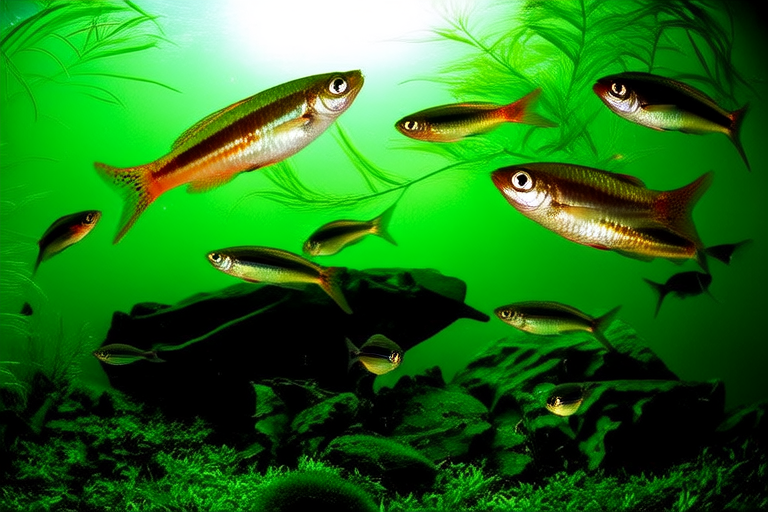The Ultimate Guide to Keeping Parrot Fish Happy and Healthy
Parrot fish are popular choices among aquarium enthusiasts due to their vibrant colors and unique personalities. However, keeping these fish happy and healthy requires specific care and attention. This guide will cover essential aspects of parrot fish care, including ideal tank setup, water parameters, diet requirements, common health issues, and behavioral insights. Whether you’re a novice or an experienced aquarist, this information will help ensure your parrot fish thrive in their aquatic environment.
Ideal Tank Setup
The first step in providing optimal care for your parrot fish is setting up a suitable tank. A well-planned tank environment can significantly enhance your fish’s quality of life. Start by choosing a tank that provides ample space; a minimum of 55 gallons is recommended for a single parrot fish, with additional space required for each additional fish. Larger tanks offer more swimming room and better water quality.
Substrate selection is crucial as parrot fish have a tendency to dig and sift through the substrate. Use smooth, rounded gravel or sand that won’t harm their mouths or digestive systems. Decorative elements like caves, rocks, and plants provide hiding spots and enrichment. Live plants can be beneficial, but some parrot fish may nibble on them, so choose sturdy species if you opt for live plants.
Proper filtration is vital to maintain water quality. Select a filter capable of handling at least four to six times the volume of your tank per hour. Regular water changes—about 20% weekly—are also necessary to keep toxins at bay. Ensure adequate aeration by incorporating an air pump or power head to promote oxygen circulation.
Water Parameters
Maintaining appropriate water conditions is key to parrot fish health. Aim for a pH level between 6.5 and 7.5, with a temperature range of 75 to 82 degrees Fahrenheit. Ammonia and nitrite levels should always read zero, while nitrate levels should remain below 40 ppm. Regular testing and monitoring are essential to ensure these parameters stay within safe limits.
To achieve stable water conditions, perform regular partial water changes and monitor parameters closely. Additionally, consider using a dechlorinator to neutralize harmful chemicals present in tap water. Consistent maintenance helps prevent stress-related illnesses and ensures a comfortable living environment for your parrot fish.
Diet Requirements
Feeding your parrot fish a balanced diet is crucial for their overall health and longevity. These omnivorous fish require a variety of nutrients from plant and animal sources. Offer high-quality flake food, pellets, and frozen or freeze-dried foods such as brine shrimp, bloodworms, and daphnia. Supplement their diet with fresh vegetables like zucchini, cucumber, and spinach to provide necessary vitamins and minerals.
It’s important to feed your parrot fish several small meals throughout the day rather than one large feeding. This mimics their natural grazing behavior and aids in digestion. Be cautious not to overfeed, as excess food can lead to poor water quality and health problems. Monitor their appetite and adjust portions accordingly.
Common Health Issues
Despite proper care, parrot fish may still encounter health issues. Familiarizing yourself with common ailments allows for early detection and treatment. One prevalent issue is ich, characterized by white spots on the fish’s body. Promptly treat ich with appropriate medication and improve water quality.
Bacterial infections often manifest as redness, open sores, or fin rot. Maintaining clean water and reducing stress can prevent bacterial infections. Fungal infections, typically seen as cotton-like growths, are another concern. Keep water parameters stable and address any signs of fungal infection promptly.
Parrot fish are susceptible to swim bladder disorders, which cause buoyancy issues. These can result from overfeeding or internal blockages. Adjust feeding habits and consult a veterinarian for further guidance if symptoms persist. Regular health checks and prompt action can help manage these conditions effectively.
Behavioral Insights
Understanding parrot fish behavior contributes to their well-being. Parrot fish are generally peaceful but can become territorial during feeding times. Provide plenty of hiding spots and feeding stations to minimize competition. They are social creatures and enjoy the company of other parrot fish or compatible species.
Parrot fish exhibit fascinating behaviors such as sifting through substrate for food and creating sleeping burrows. Encourage these natural behaviors by offering appropriate tank decorations and substrates. Observe their interactions and activity levels regularly to ensure they are thriving in their environment.
Training and interaction can strengthen the bond between you and your parrot fish. Many parrot fish respond well to gentle hand-feeding, which can be a rewarding experience for both the fish and the owner. Always approach your fish calmly and avoid sudden movements to prevent stress.
Conclusion
By following these guidelines, you can create an enriching and supportive habitat for your parrot fish. A well-maintained tank, balanced diet, and attentive care contribute to their happiness and health. Remember, each parrot fish is unique, so adapt your care routine based on individual needs and preferences. With dedication and knowledge, you can provide a fulfilling life for your parrot fish and enjoy many years of companionship.
